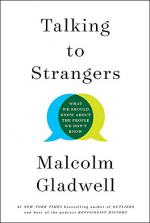
|
Lesson 1 (from Introduction: "Step Out of the Car" and Part One: Spies and Diplomats)
Objective
Students will examine Gladwell’s use of literary devices within Talking to Strangers in order to study the way in which similes and other literary devices aid the reader's understanding of illustrations and argumentation presented by Gladwell within the nonfiction text.
Malcolm Gladwell often uses metaphor and paradox, among other types of figurative language, as he puts forth the arguments laid out within the book Talking to Strangers. In one such instance in Chapter 2, “Getting to Know der Fuhrer,” Gladwell discusses a paradox within the human mind that was exposed by studies conducted by the psychologist Emily Pronin. When people participated in a word association exercise, they ascribed no particular significance to their own responses. However, mere minutes after completing said exercise, everyone was quick to draw all sorts of conclusions about other people, based on their responses. By finding and analyzing the effects of particular...
Aligned to the following Common Core Standards:
- ELA-Reading: Literature RL.9-10.1, 9-10.4, 9-10.10, 11-12.1, 11-12.4, 11-12.10
- ELA-Writing W.9-10.2, 11-12.2
|
This section contains 9,815 words (approx. 33 pages at 300 words per page) |

|




